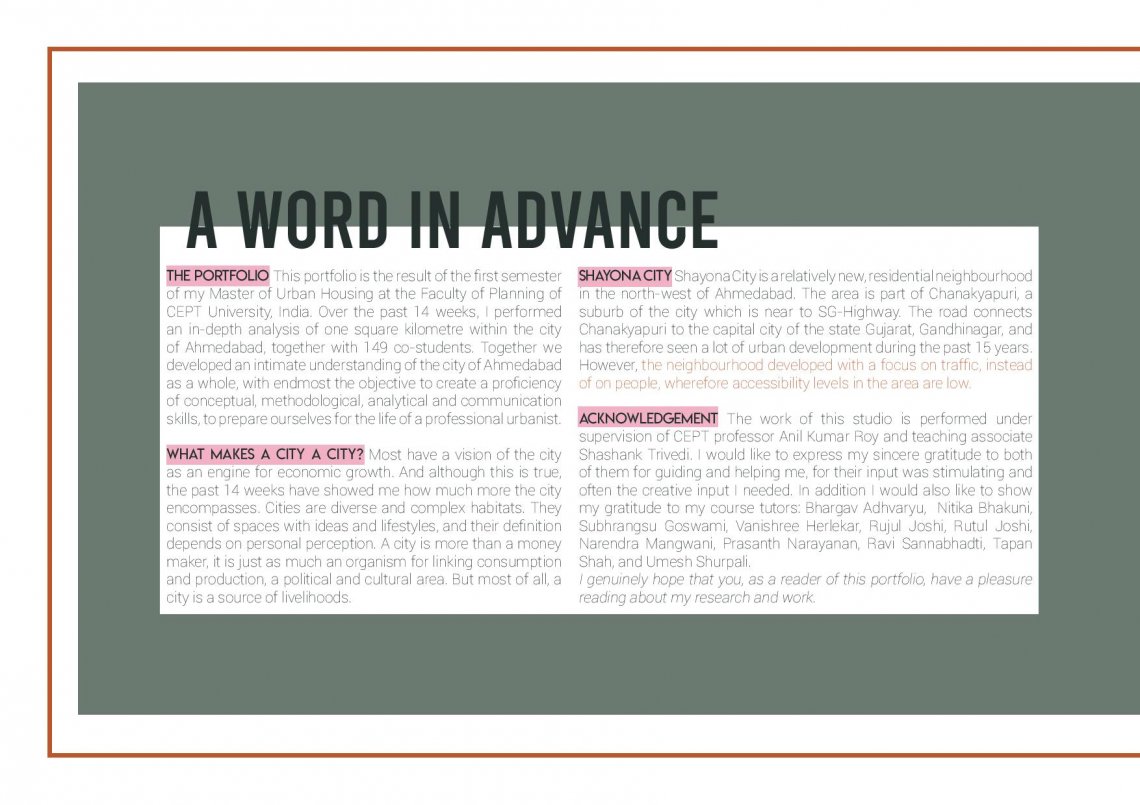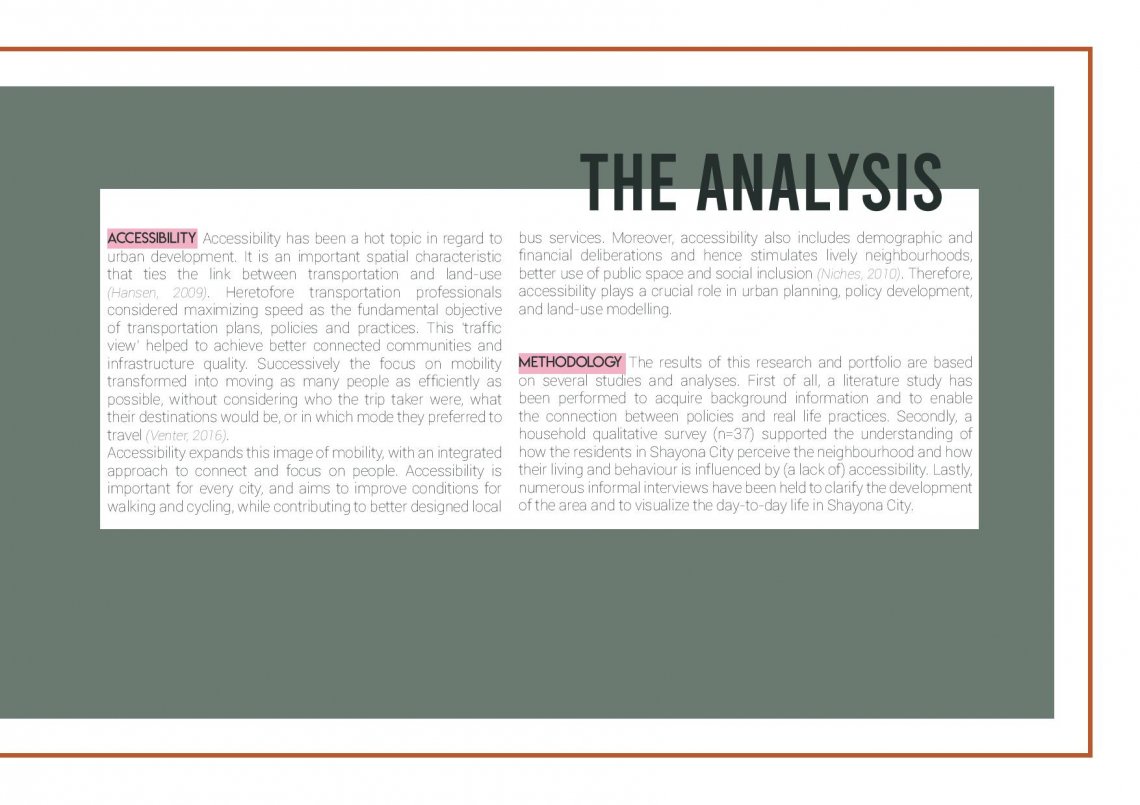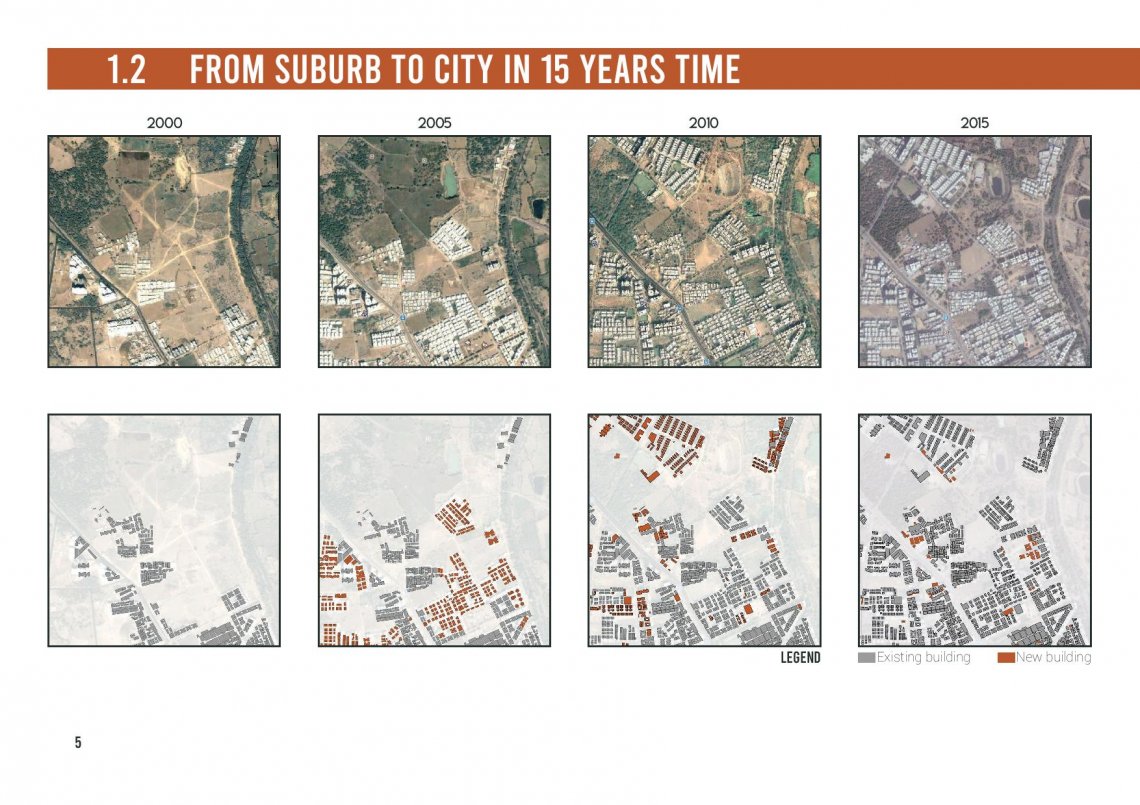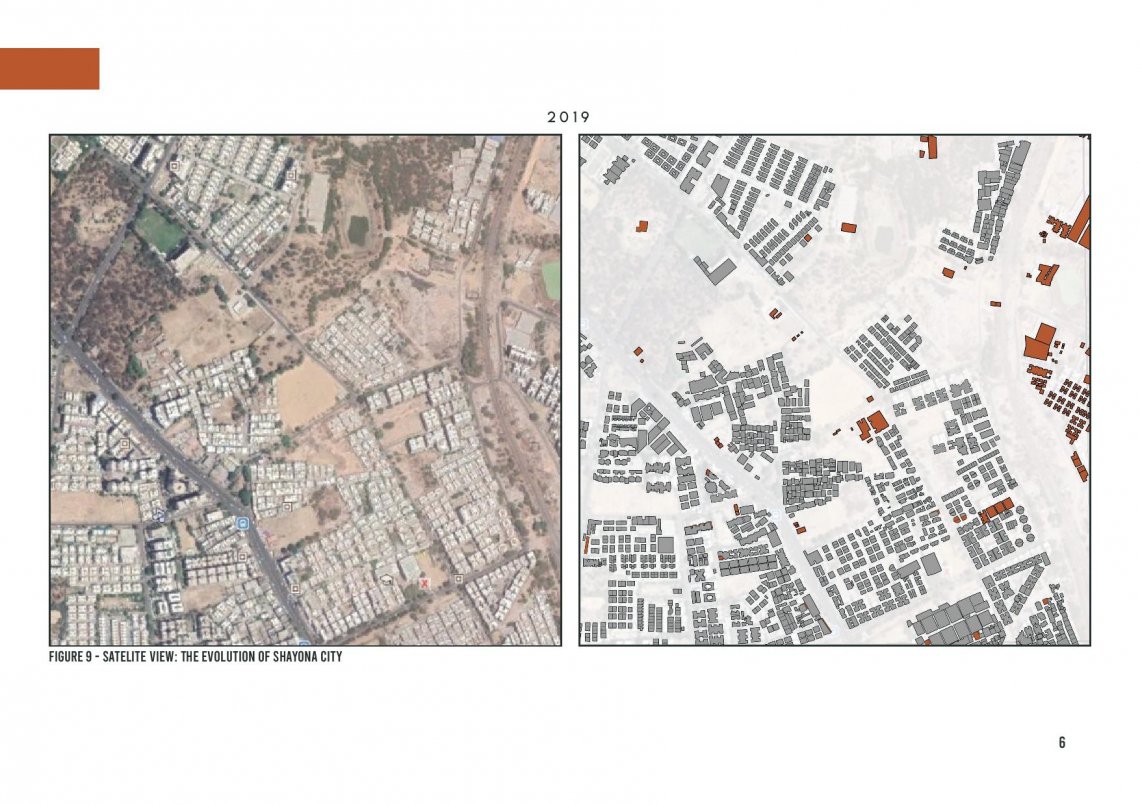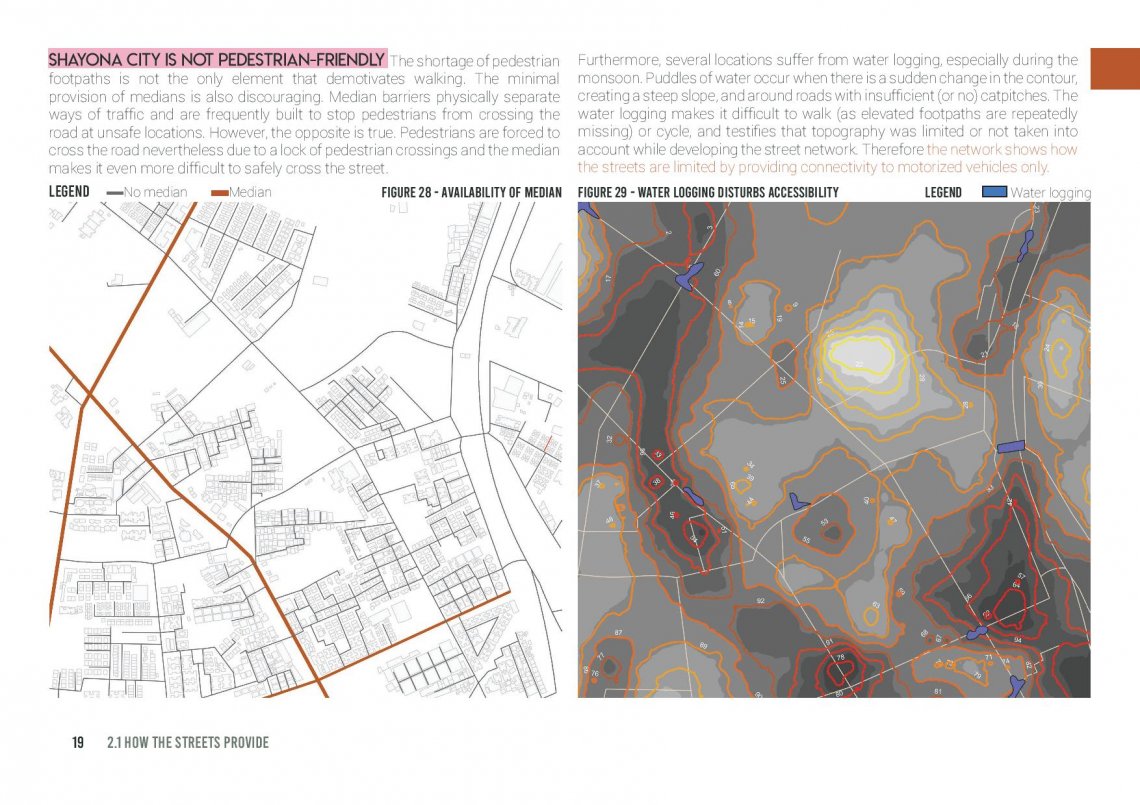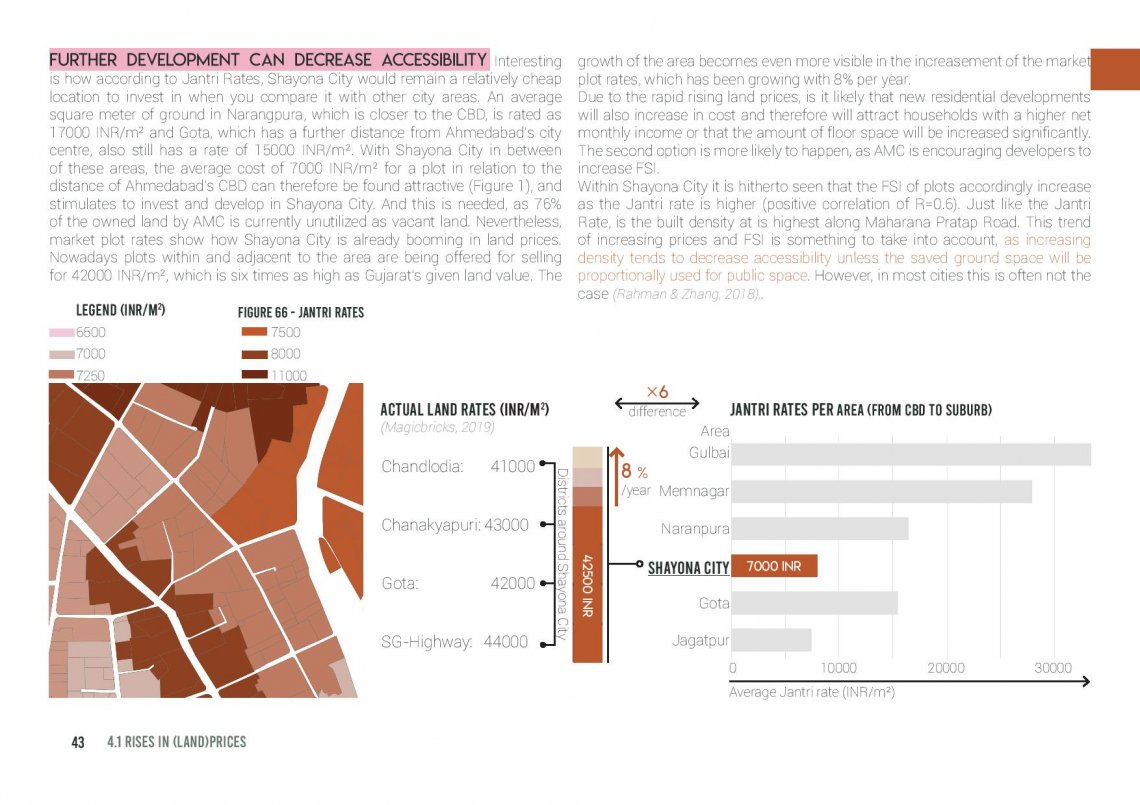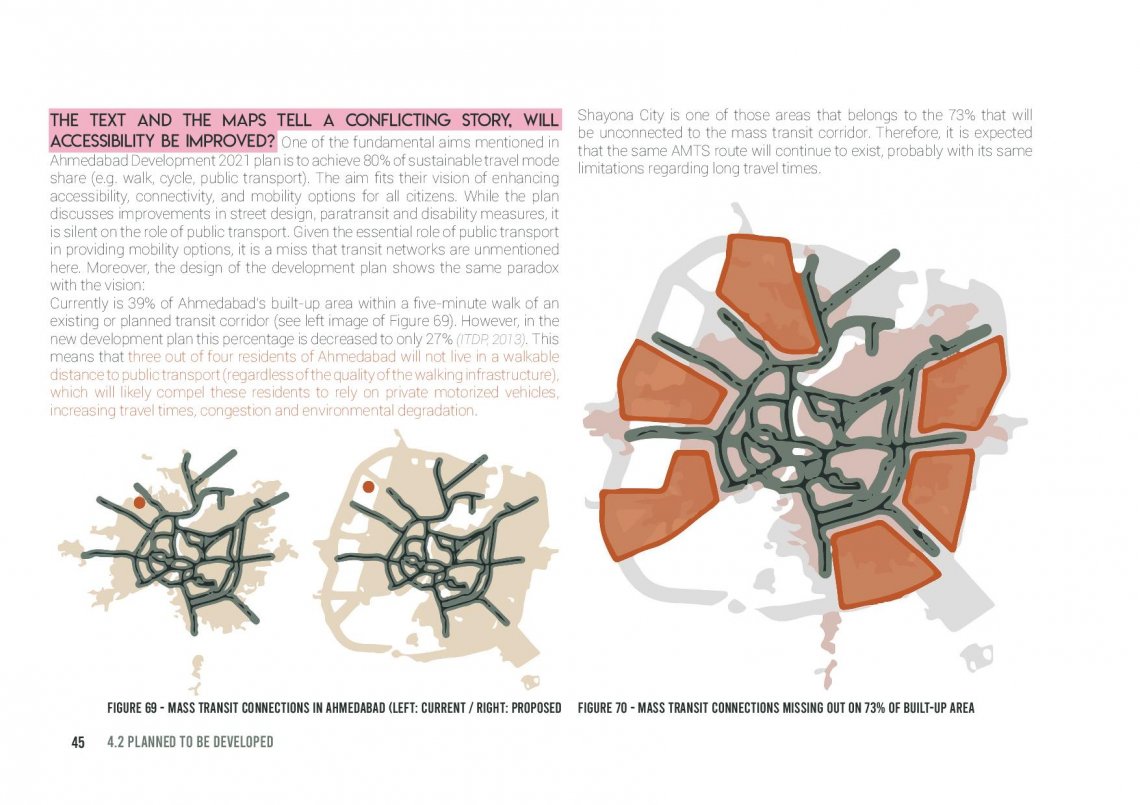Your browser is out-of-date!
For a richer surfing experience on our website, please update your browser. Update my browser now!
For a richer surfing experience on our website, please update your browser. Update my browser now!
Shayona City is a relatively new, residential neighbourhood in the north-west of Ahmedabad. The area is part of Chanakyapuri, a suburb of the city which is near to SG-Highway. The road connects Chanakyapuri to the capital city of the state Gujarat, Gandhinagar, and has therefore seen a lot of urban development during the past 15 years.
However, the neighbourhood developed with a focus on traffic, instead of on people, wherefore accessibility levels in the area are low.
Accessibility has been a hot topic in regard to urban development. It is an important spatial characteristic that ties the link between transportation and land-use (Hansen, 2009). Heretofore transportation professionals considered maximizing speed as the fundamental objective of transportation plans, policies and practices. This ‘traffic view’ helped to achieve better connected communities and infrastructure quality. Successively the focus on mobility transformed into moving as many people as efficiently as possible, without considering who the trip taker were, what their destinations would be, or in which mode they preferred to travel (Venter, 2016). Accessibility expands this image of mobility, with an integrated approach to connect and focus on people. Accessibility is important for every city, and aims to improve conditions for walking and cycling, while contributing to better designed local
bus services. Moreover, accessibility also includes demographic and financial deliberations and hence stimulates lively neighbourhoods, better use of public space and social inclusion (Niches, 2010). Therefore, accessibility plays a crucial role in urban planning, policy development, and land-use modelling.
Methodology: The results of this research and portfolio are based on several studies and analyses. First of all, a literature study has been performed to acquire background information and to enable the connection between policies and real life practices. Secondly, a household qualitative survey (n=37) supported the understanding of how the residents in Shayona City perceive the neighbourhood and how their living and behaviour is influenced by (a lack of) accessibility. Lastly, numerous informal interviews have been held to clarify the development of the area and to visualize the day-to-day life in Shayona City.
